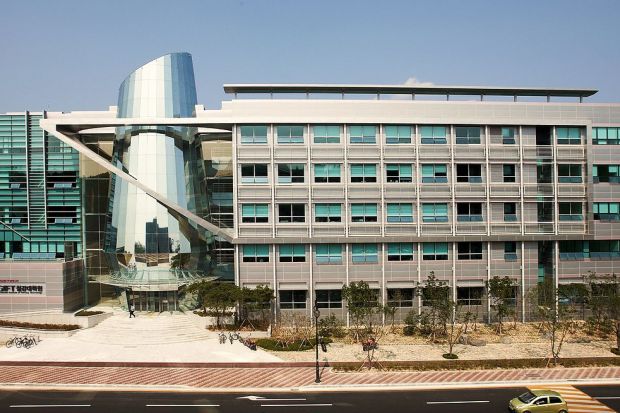POSTECH: Alleviating Inflammation by NO-Scavenging and Delivering Drugs
Have you experienced fever or swelling in the morning with stiff or sore joints? The cause of rheumatoid arthritis – a chronic inflammatory joint disease that can occur in various joints such as hands, wrists, feet and ankles – is still unknown. As such, it is difficult to find an appropriate treatment that completely removes inflammation. To this, a POSTECH research team has proposed a treatment that pinpoints and removes inflammation and delivers drugs to the inflammatory area.
Professor Won Jong Kim and Ph.D. candidate Taejeong Kim of Department of Chemistry at POSTECH in collaboration with OmniaMed Co., Ltd. have developed a hybrid hydrogel platform that delivers therapeutic drugs to the site of rheumatoid arthritis via syringe injection that locally reacts with and removes nitric oxides (NO) that cause inflammation without any side effects. These findings were published as the inside back cover paper of Advanced Materials, a world-renowned academic journal.
In various inflammatory diseases, including rheumatoid arthritis, overproduced NO causes painful inflammation and aggravates symptoms by abnormally upregulating inflammatory immune cells. In order to eliminate inflammation, it is important to selectively deplete overproduced NO. The NO-scavenging hydrogels developed so far have limitations in depleting NO since they cannot be injected directly into the local area or easily escape to other areas when injected as a small molecule.
In particular, since normal concentration of NO plays an important role in the body, NO depletion in other parts of the body – other than the injection site – may cause side effects.
The research team designed an injectable hydrogel that can be easily injected into the inflammatory site that can selectively control the anti-inflammatory agent according to the degree of inflammation while being long-lasting in the local injection site. The researchers first prepared a liquid that can be directly injected using a syringe and cross-linked self-assembled polymeric aggregates capable of carrying anti-inflammatory drugs.
Two injected liquids via dual-syringe are rapidly transformed into hydrogel when mixed simultaneously at injected site, and collects and eliminates the overproduced NO at the target site. In addition, it includes nanometer-sized polymeric aggregates that can self-heal even if damaged by external pressure, helping to replenish the viscosity in joints.
The research team verified in animal models that the hybrid hydrogel collects abnormally high levels of NO at the inflammatory site, and confirmed that hydrogel is hydrolyzed to release the drugs depending on the NO concentration. In addition, it was confirmed that the inflammatory symptoms were significantly alleviated when the anti-inflammatory drug dexamethasone was added to the hydrogel and injected into the rheumatoid arthritis model.
“The concept of NO-scavenging hydrogel platform developed in this study is a breakthrough because it specifically responds to the NO, a major substance that causes an inflammatory reaction in autoimmune diseases such as rheumatism. It releases the drugs in response to the NOs and treats diseases by depleting them,” explained Professor Won Jong Kim who led the study. “This NO-scavenging hydrogel system can be applied to various inflammatory diseases with a simple process, presenting applicable potential to treatments currently on the market or in clinical trials.”
This study was supported by the Creative Materials Discovery Program, the ICT Creative Consilience Program, and the Basic Research Program of the National Research Foundation funded by the Ministry of Science and ICT of Korea, and as an industry-academia project between OmniaMed Co., Ltd. and POSTECH.

